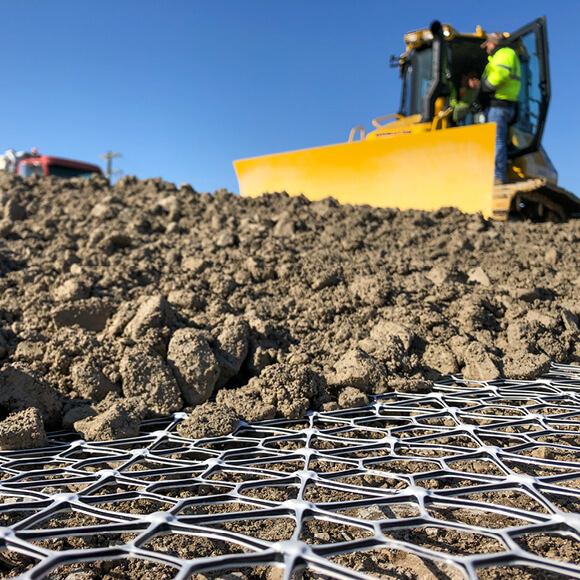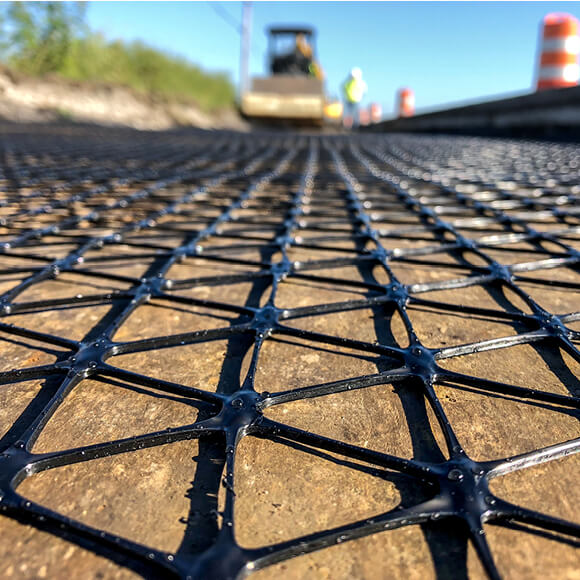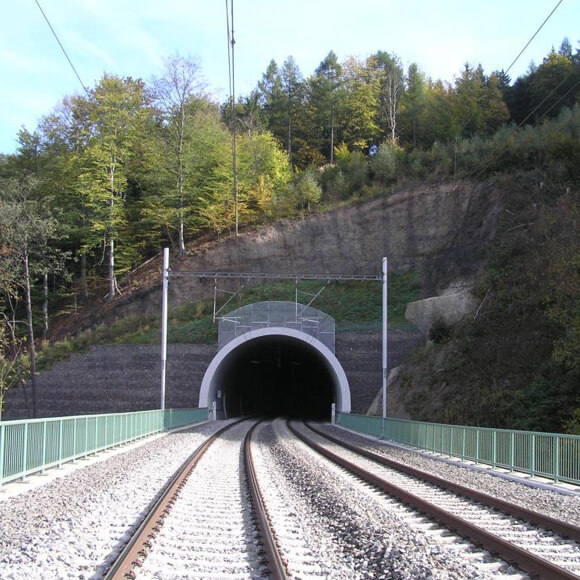
Rail Trackbed Improvement
Increase trackbed stiffness, reduce variability, minimise track settlement and ballast degradation.
Tensar trackbed stabilisation systems are used internationally, delivering track construction and renewal schemes quickly, economically and safely.
Tensar geogrids have been designed to interlock efficiently with granular materials to provide confinement of the aggregate, thereby limiting movement of the particles under rail traffic load. This reduces deformations and creates a mechanically stabilised layer with improved stiffness and strength.
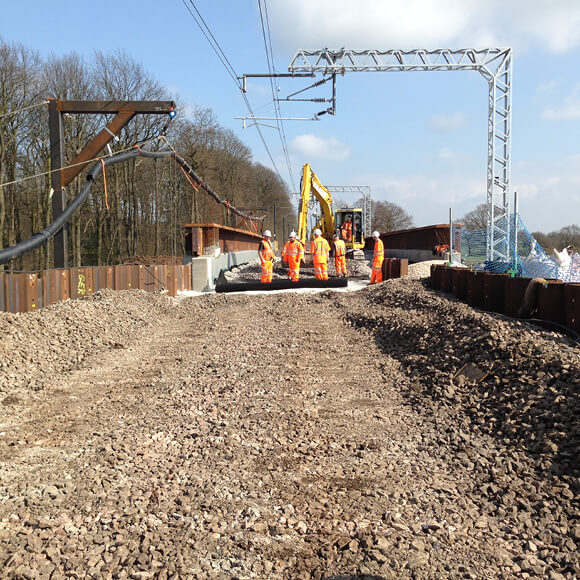
Track Maintenance and Renewals
Mechanical Stabilisation of Ballast Reduces the Rate of Track Level Deterioration
The ability to retain line levels is directly related to the design and condition of the trackbed and earthworks: if trackbed layers are adequately designed, only the ballast layer will require maintenance. Periodic tamping will be necessary to maintain track levels and compensate for ballast migration under the action of traffic, however many existing sections of track have less than ideal track support conditions, resulting in accelerated ballast migration and loss of track quality. The rate of deterioration is also related to trackbed stiffness. Mechanical stabilisation of the ballast layer controls ballast migration and this has a direct effect on the rate of deterioration in track quality. Research has shown that a reduction in track deterioration of between 2-4 times is achievable, which translates to extending the period between maintenance up to 4 times.
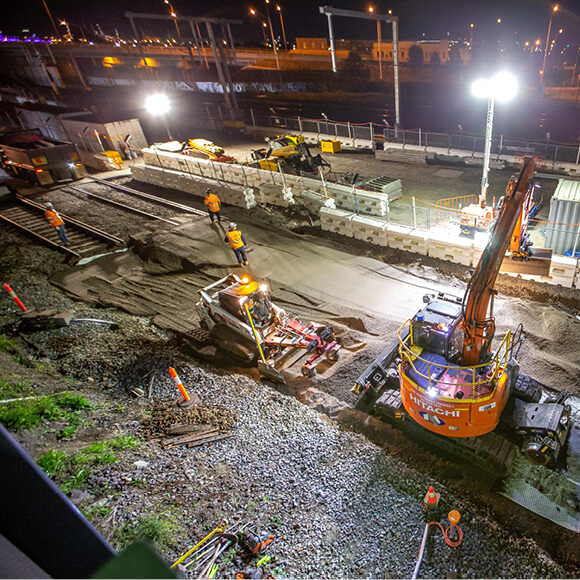
Trackbed Construction
Mechanical Stabilisation – Increases Trackbed Stiffness and Strength
Track stiffness has a major impact on railway track performance. Some deflection under wheel load is a positive thing, as the deflection bowl represents a spreading of load, reducing stresses in each layer. However excessive deflection causes increased stresses in the rail system and dynamic effects on the ballast layer leading to loss of track quality.
Stiffness of the trackbed has a major influence on overall track stiffness. Track geometry, deflections and longevity are all influenced by the trackbed stiffness. Trackbed stiffness is a composite effect of all support layers and is therefore dependent on the properties and thickness of the ballast layer, sub-ballast/blanket layers, capping layer and subgrade.
Mechanical stabilsation of the sub-ballast, blanket layer or capping layer can increase the bearing capacity and stiffness of the trackbed, particularly over soft or variable subgrade conditions.
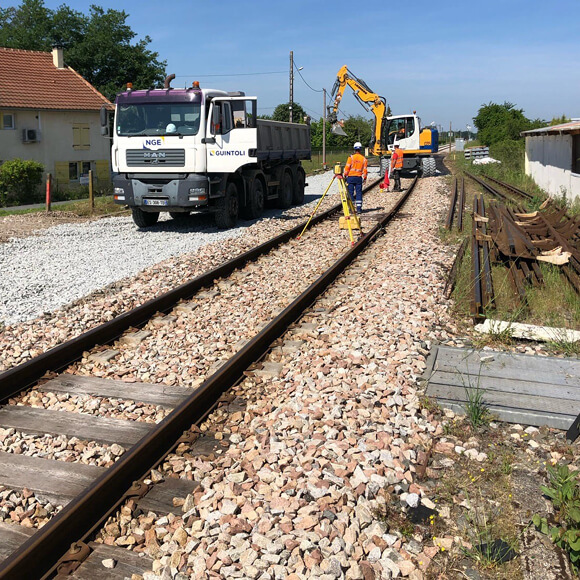
The Six Trackbed Improvement Opportunities with Mechanical Stabilisation
Increase trackbed stiffness: Trackbed stiffness has a direct influence on track deflection under load. A high stiffness is essential to maintain line speeds and is increased by mechanical stabilisation of the sub-ballast of blanket layer.
Reduce trackbed variability: Variable subgrade conditions provide a non-uniform track stiffness, leading to uneven settlement and track deflections. Mechanical stabilisation of the sub-ballast or blanket layer reduces subgrade stiffness variability, providing more consistent track support.
Increase bearing capacity and reduce trackbed settlement: soft subgrade conditions result in greater formation settlement, reduced track stiffness and loss of track alignment. Mechanical stabilisation of the sub-ballast or blanket layer increases bearing capacity, reducing settlements and maintaining track alignment.
Reduce ballast displacement and track settlement: Lateral displacement of the ballast under the action of rail traffic, particularly over weak spots, leads to excessive settlement and loss of track alignment. Mechanical stabilisation of the ballast layer controls ballast displacement, maintaining track alignment and extending the period between ballast tamping maintenance.
Minimise ballast degradation: Abrasion of ballast particles under the action of rail traffic creates fines that clog drainage and reduce the ballast layer stiffness. Mechanical stabilisation of the ballast layer limits particle to particle movement, reducing degradation and maintaining the ballast layer strength and drainage characteristics.
Smooth trackbed transitions: Abrupt changes in trackbed stiffness can occur over below-track structures such at culverts or bridge decks. This leads to loss of alignment and poor ride quality that limit track speeds. Mechanically stabilised and stiffened foundation approach zones result in smooth transitions.
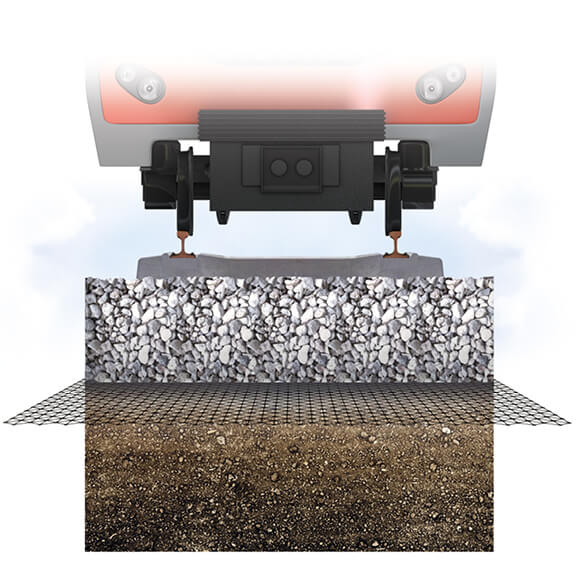
Tensar performance-based design method for mechanically stabilised trackbed
Tensar has developed a performance-based design method to determine ballast and sub-ballast thickness to prevent failure of formations and subgrades during the design life of reconstructed rail lines. It takes account of the projected traffic tonnage to predict subgrade deformation accumulation to ensure that excess deformation (ballast pocket formation) and progressive failure are unlikely to occur.
A Fully Validated Performance-Based Design
The approach uses cutting-edge 3D finite element analysis (FEA) with advanced hardening plasticity constitutive models to predict permanent deformations in both cohesive and non-cohesive subgrades under train wheel loading. The benefit of mechanical stabilisation of ballast or sub-ballast layers using TriAx geogrid is incorporated using the Tensar Stabilised Soil constitutive model with input parameters determined from large triaxial compression testing on typical rail ballast, and sub-ballast materials with TriAx geogrid. The results of parametric studies in FEA have been used to develop a simple mobilised bearing capacity approach to performance-based design for rapid optioneering. The design method has been validated by laboratory testing and data from full-scale field trials.



